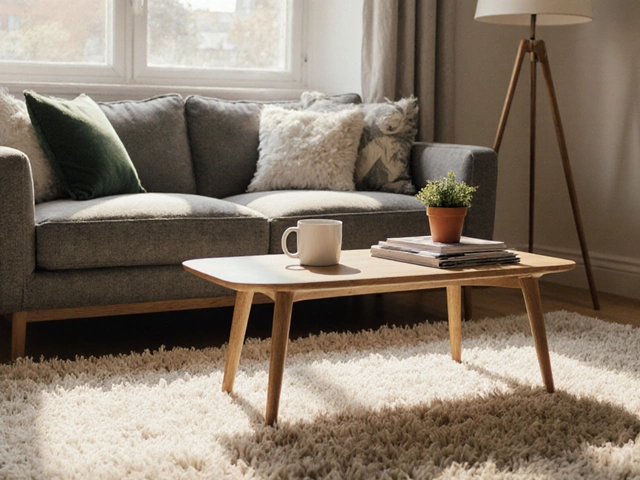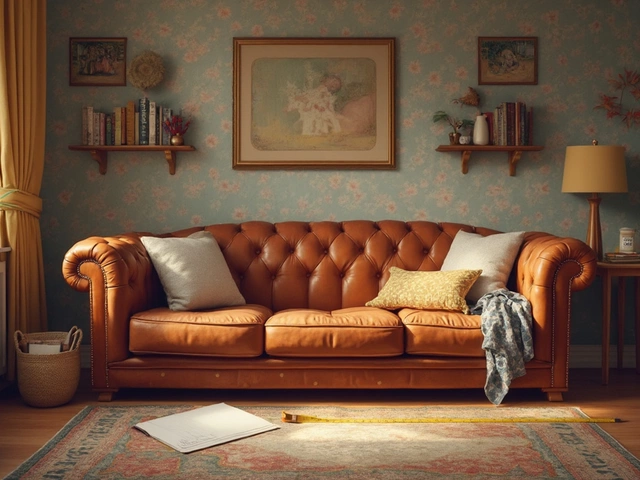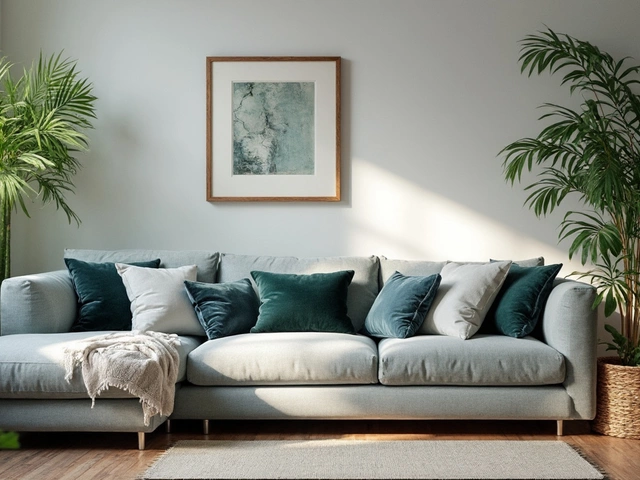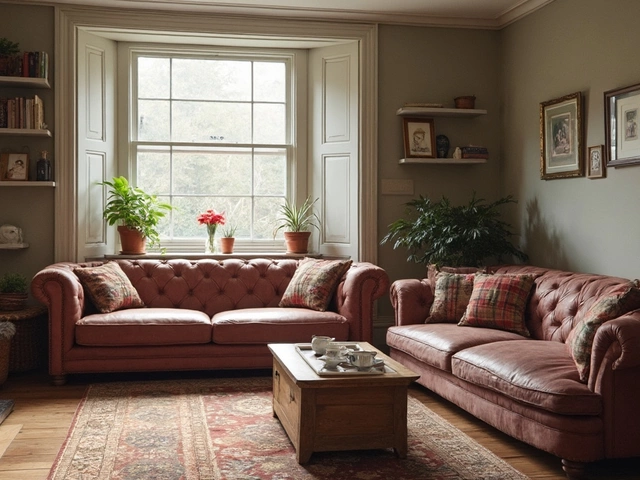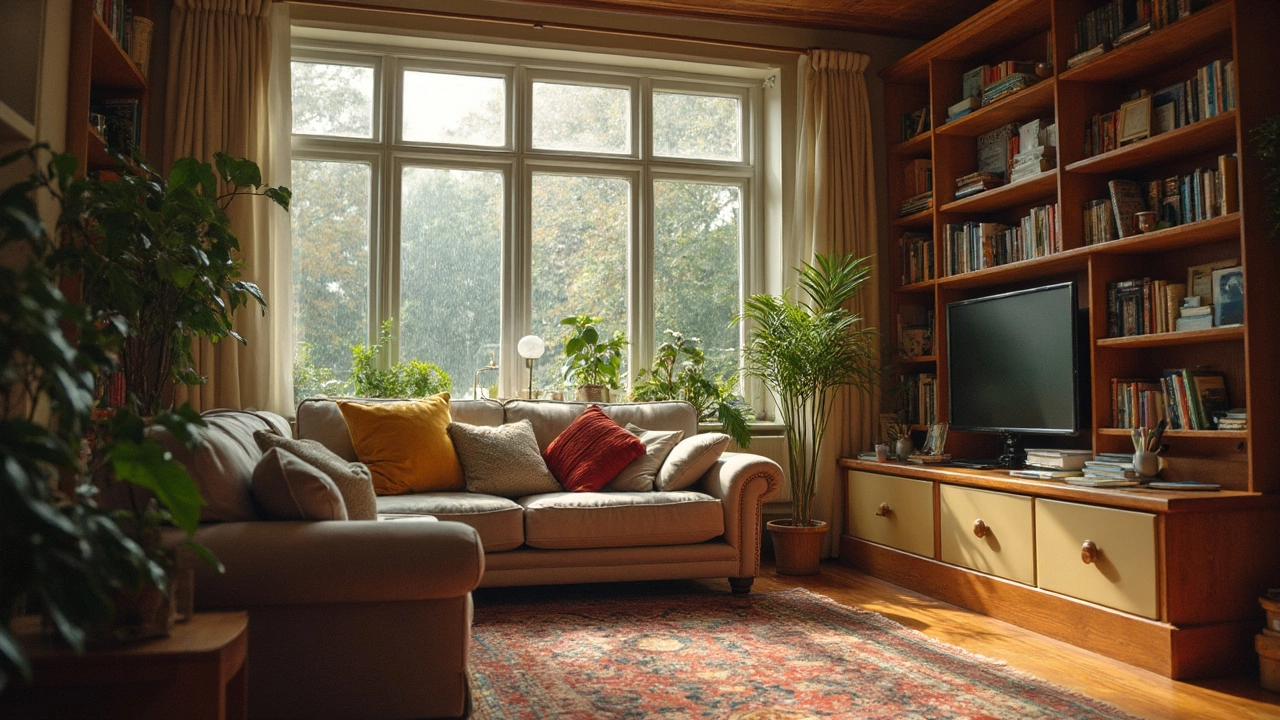 30
Apr,2025
30
Apr,2025
Mold on furniture is frustrating, gross, and sometimes even dangerous for your health. It’s not just a matter of looks—mold also weakens wood, damages fabric, and can smell awful. The worst part? Sometimes you don’t spot it until it’s already spreading.
If you’ve ever opened up a drawer and smelled that familiar musty funk, you know how fast mold can take over, especially in storage furniture that doesn’t get much use. Even closed cabinets aren’t safe if moisture sneaks in or air gets stale.
The good news: it’s actually pretty easy to make mold feel unwelcome in your home. If you know where to look and what to do, you can stop it before it starts. This isn’t about fancy sprays or spending a ton on gadgets—it’s mostly about a few tweaks in how you use, clean, and store your furniture. Let’s get into what really works so you can keep your things in great shape for years.
- Why Mold Loves Furniture
- Where Mold Strikes First
- Smart Ways to Control Air and Moisture
- Best Materials and Finishes
- Cleansing Mold Without Ruining Furniture
- Top Storage Hacks to Keep Mold Away
Why Mold Loves Furniture
Mold is like that guest who never pays rent but ruins your stuff anyway. It’s wild how fast it can latch onto storage furniture, turning your favorite dresser or bookcase into its personal playground.
Mold loves a few things: moisture, warmth, darkness, and something tasty to eat—like wood or cloth fibers. Furniture often gives mold the perfect combo, especially when it’s tucked in a basement, packed close to walls, or sealed tight without much airflow. Even if you're careful, humidity in the air can sneak inside drawers or cabinets, creating a zone where mold spores get comfy and multiply.
Here's what makes mold prevention tricky with furniture:
- Materials matter: Mold isn’t picky but especially loves natural stuff—wood, cotton, linen, leather. Cheaper particle boards can attract mold even faster if their surfaces get scratched or exposed.
- Airflow is weak: When furniture sits flush against walls or you stack boxes for months, it stops air from circulating. No air = more moisture building up.
- Dust makes it worse: Even a thin layer of dust on surfaces can feed mold. Spores stick to dust and get an extra meal—gross, right?
- Temperature swings: Basements, garages, or closed-off rooms can get humid or chilly, then warm up—not ideal for keeping mold prevention under control.
Mold doesn’t just show up in homes with flooding or obvious leaks. Studies have found it can start growing in as little as 24-48 hours if the humidity levels climb above 60%. Check out this quick snapshot:
| Humidity Level | Mold Risk |
|---|---|
| Below 50% | Low |
| 50-60% | Possible |
| Above 60% | High |
Bottom line: Mold isn’t just an outdoor problem. It’ll gladly move in with your storage furniture the second it gets a chance. Knowing this, you’re already one step ahead if you can spot these habits and trouble zones in advance.
Where Mold Strikes First
Mold isn't picky, but it always goes for the easiest targets. If you've got storage furniture like dressers, cabinets, or wardrobes, the insides are at the top of the danger list. Mold loves dark, cramped places—especially if air doesn’t move much or if you stash damp stuff inside by accident.
The trouble spots? Corners, the inside of drawers, around baseboards, and the underside of shelves. These get very little air. Storage spots up against exterior walls or in basements are even riskier, thanks to colder surfaces and high humidity.
If you live somewhere humid (think Florida in summer), furniture in closets or rooms without AC can go moldy insanely fast. In a 2023 study about indoor mold prevention, researchers found that wood furniture kept in rooms over 60% humidity grew visible mold in less than a week. Plastic and metal handled things better, but fabric seats and unsealed particle board soaked up the moisture big time.
You might be surprised that even inside seemingly closed cabinets, moisture can sneak in. Steam from showers, leaks in the roof, or just wet shoes and jackets stored inside furniture are all culprits. Don’t forget about what you store—papers, old clothes, and towels all hold onto water.
- Dressers in damp bedrooms
- Storage benches in entryways (especially after rainy days)
- Cabinets under windows or close to kitchens/bathrooms
- Any storage furniture in a basement or garage
If you want a quick check: run your hand over hidden parts—if it feels cold or clammy, watch out. And if it smells musty when you open a drawer, that’s a big red flag for hidden mold growth.
Smart Ways to Control Air and Moisture
If you're serious about stopping mold from setting up shop on your storage furniture, controlling air and humidity is at the top of your to-do list. Mold can’t thrive without enough moisture in the air—so your main goal is to keep things dry and breezy.
First up: get a basic hygrometer (those little humidity meters). You want indoor humidity below 60%, with 40–50% being the sweet spot. If it’s higher, you’re basically giving mold an invitation. Basements, bathrooms, and closets are usually the riskiest places because air just sits there—not much airflow. Opening windows helps, but sometimes that’s not enough.
Here’s what actually works for most folks:
- Use a dehumidifier in humid rooms, especially where you store furniture. Even a cheap portable model can make a difference.
- Keep air moving with a small fan. Position it to avoid dead spots behind or under furniture—those are mold’s favorite hangouts.
- Wipe up spills or condensation right away. Leaving water to sit on or under furniture is basically a mold starter pack.
- Don’t shove furniture against exterior walls. Leave a little space so air can flow behind dressers, cabinets, or shelves.
- Check for leaks around windows, pipes, or in your roof. One tiny drip can lead to a full-blown mold party. Fix leaks ASAP and dry out the area.
- Use moisture absorbers like silica gel packs or special beads (DampRid, for example) inside drawers or storage cabinets. They grab onto water before mold can.
Here’s a quick look at what indoor humidity actually means in terms of mold risk:
| Humidity | Mold Risk |
|---|---|
| Below 40% | Very low |
| 40% - 60% | Low to moderate |
| Above 60% | High |
Avoid storing anything in plastic bags or airtight containers on wood shelves in humid places. Weirdly, airtight isn’t mold-proof if any moisture sneaks inside—mold just traps itself in with your stuff. Always dry things out before putting them away.
Keeping tabs on mold prevention does take a little effort, but once you’ve got a few good habits, it gets super easy. Your furniture (and your nose) will thank you for it.
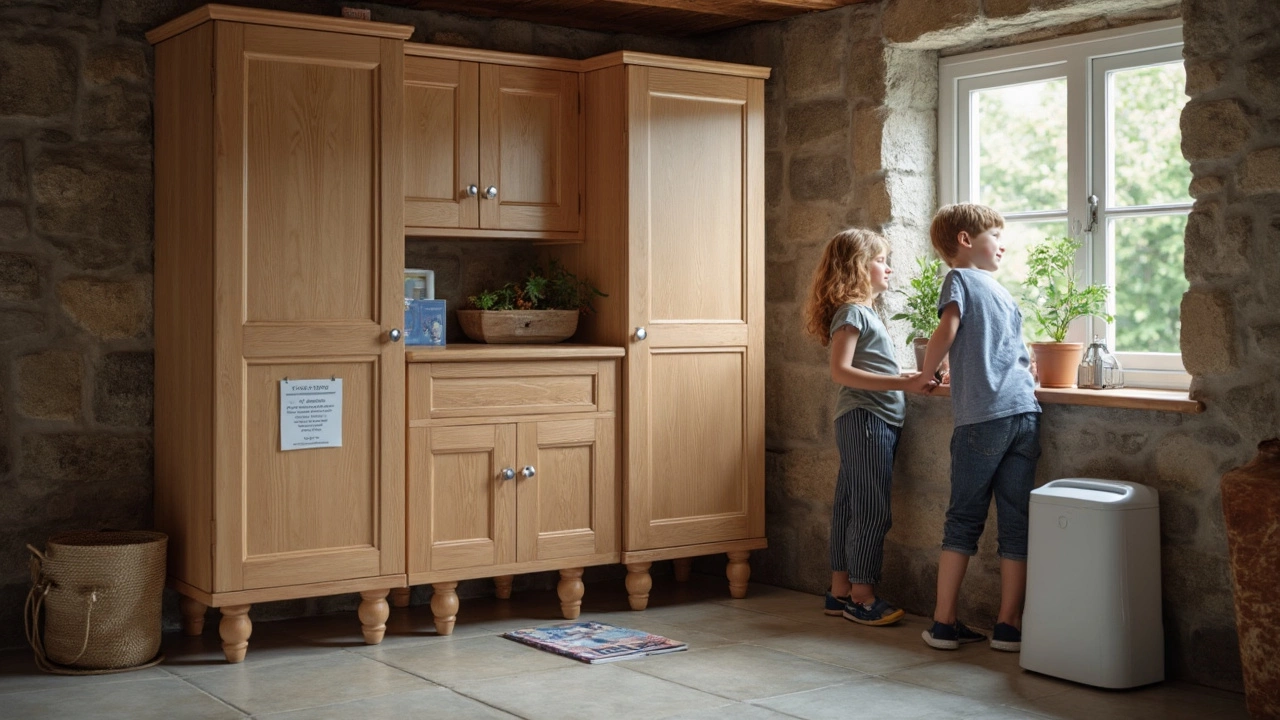
Best Materials and Finishes
Picking the right furniture material is your first line of defense against mold. Some stuff just handles moisture way better. Mold loves to grow on anything organic, so solid wood and untreated fabric are easy targets. On the flip side, synthetic materials and well-sealed surfaces put up a fight and make cleaning a lot easier.
Storage furniture made from metal, plastic, or laminate rarely gets mold unless you spill something and leave it there. Metal cabinets, for example, are a solid bet for basements or any damp space. They don’t absorb water like wood or cloth — mold can't dig in. Same goes for high-quality plastic bins; that’s why moving companies and pro organizers swear by them.
Not all woods are equal. Teak, cedar, and redwood naturally resist mold better. They contain oils that make the surface less appealing to mold spores, which is a cool bit of nature working in your favor. If you already own softwoods like pine or untreated plywood, give them a boost with the right finish.
- Paint or Varnish: A good coat of oil-based paint, polyurethane, or marine varnish can seal up wood and keep moisture out. Water-based finishes don’t block moisture nearly as well, so go for oil-based if you can.
- Mold-resistant Sprays: These can help, especially on untreated or vintage furniture. Just check the label to make sure it’s safe for your furniture’s surface.
- Fabric Choices: Synthetic fabrics like polyester or nylon are less likely to grow mold than cotton, wool, or silk. If you can’t avoid natural fabrics, make sure they’re removable and washable.
Quick fact: According to a study by the American Society for Microbiology, untreated cotton upholstery can start showing visible mold growth in as little as 48 hours in high humidity. Synthetic fibers took over three times longer under the same conditions.
If you’re shopping for storage furniture or refinishing a piece you love, ask yourself: Is this going in a spot with lots of moisture (like a basement, mudroom, or near the kitchen)? If yes, pick materials and finishes that don’t soak up water and use a sealant. The more you block out moisture, the less chance mold has to set up shop.
Cleansing Mold Without Ruining Furniture
Getting rid of mold on storage furniture can feel intimidating, but it’s manageable if you follow a few key steps. Mold grows fast in cool, damp spots—especially if there’s dust or leftover spills that feed the spores. Acting fast makes all the difference, and it keeps things from getting smelly or damaged further.
First things first, put on gloves and, if possible, a mask. Mold spores aren’t great for your lungs. Take your furniture outside if you can—sunlight actually helps kill mold, and you won’t risk spreading spores around your home. If outside isn’t an option, open windows for air flow. Never use harsh chemicals on wood or fabric without checking labels—they can do more harm than good.
- Vacuum loose mold first using a vacuum with a HEPA filter. This keeps microscopic spores from flying everywhere.
- For wood: Mix a bit of mild dish soap or white vinegar with warm water. Dip a cloth in the solution and gently wipe the moldy surface. Don’t soak wood—too much water can warp it. Dry the area with a towel right after.
- For upholstered furniture: Sprinkle baking soda on the spot and let it sit for an hour to soak up moisture and smells. Then vacuum it up. For tougher spots, lightly dab (don’t rub) with half white vinegar, half water. Let it air dry in a sunny spot if possible.
Sometimes, the mold stain sticks around even after cleaning. You can try lightly sanding affected wood, but only if the piece isn’t valuable or antique. Always test a small spot first.
| Material | Cleaning Solution | Safe for Use? |
|---|---|---|
| Solid Wood | Soap & Water, Vinegar Mix | Yes (avoid soaking) |
| Veneers/Particleboard | Light Vinegar Solution | Yes (very limited moisture) |
| Fabric Upholstery | Baking Soda, Vinegar-Water Mix | Yes (damp, not wet) |
| Leather | Rubbing Alcohol (diluted) | Yes (test first, dry quickly) |
After cleaning, always dry the furniture completely—mold loves anything damp. You can use a fan or move the furniture into sunlight for a few hours. Never close up freshly cleaned pieces until you’re sure they’re dry inside and out.
If mold comes back quickly after cleaning, there’s probably a bigger moisture issue in your room. Fixing leaks or bumping up ventilation can often solve the root problem. Regular dusting and checking hidden corners can also prevent future headaches.
Top Storage Hacks to Keep Mold Away
If you want to keep mold away from your furniture in storage, you need to be a bit strategic. Mold will jump at any chance to set up shop on shelves or inside storage units, especially if it’s humid or dark. Here’s a simple playbook built around mold prevention and storage furniture care.
- Keep Things Dry: Water is mold’s best friend. If you have to put furniture away, make sure it’s totally dry first. Even a slightly damp surface can kickstart mold growth, especially on wood and fabric.
- Let Air Flow: Stuffy corners and closed cabinets trap humidity. Try to leave a bit of space around larger pieces and prop open doors or drawers when you can. Small vents in storage cabinets do wonders for air movement.
- Desiccants Are Game Changers: Grab silica gel packets (the ones that come in new shoes) or buy them cheap online. Just toss a few into drawers, cabinets, or fabric bins—they suck up extra moisture fast. Activated charcoal bags work, too.
- Raise Items Off the Floor: Never leave furniture sitting on basement or garage floors. Use pallets, bricks, or even sturdy boxes to boost furniture just a bit off the ground. Mold thrives where water pools, and the floor is usually the dampest spot.
- Go for Breathable Covers: Avoid wrapping stored pieces in plastic sheets. Go with cotton or canvas covers instead. These let your furniture breathe while keeping dust off. Plastic traps in moisture, which is basically an open invitation for mold.
- Rotate Pieces Seasonally: If you’re keeping furniture in storage for months, check it once in a while. Rotate cushions or lightly air out enclosed pieces every season. A quick look now and then can help you spot trouble before it spreads.
- Dehumidify: If your storage room or basement is always muggy, invest in a simple dehumidifier. According to EPA data, keeping humidity below 60% cuts down mold risk dramatically (aim for 30–50% for best results).
| Condition | Optimal Range |
|---|---|
| Humidity | 30% – 50% |
| Temperature | 60–77°F (16–25°C) |
These simple hacks cut the risk of mold ruining your furniture, whether you’re dealing with everyday bookcases and dressers or that bulky couch in the basement. Control humidity, let air do its thing, and rethink your covers—you’ll save time, money, and a ton of headaches in the long run.
